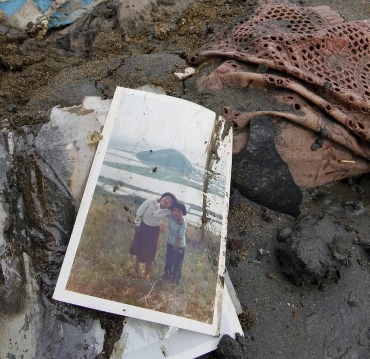
Japan's nuclear crisis assumed dangerous dimensions on Tuesday as two more blasts rocked the quake-crippled Fukushima plant spewing large amounts of radioactive material that may float towards Tokyo, with Premier Naoto Kan warning that there was a "very high risk" of further leakage.
The hydrogen explosions at No 2 and No 4 reactors at the Fukushima Daiichi plant on Tuesday morning prompted the government to announce that the radiation had reached harmful levels.
...
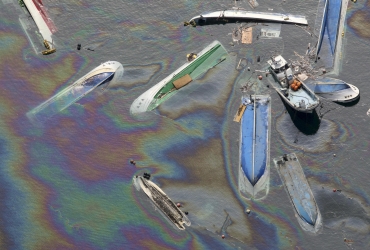
A fire was also reported around 9:40 hours local time at the No 4 reactor, where spent nuclear fuels were stored, but it was extinguished later, according to Tokyo Electric Power Company, the plant's operator.
The blast at No 2 reactor at 6:10 hours appeared to have damaged one of its containment systems for the first time, triggering fears about more serious radioactive leaks.
TEPCO said the problem could develop into a critical "meltdown" situation after part of the No 2 reactor's container vessel damaged following the explosion, Kyodo reported.
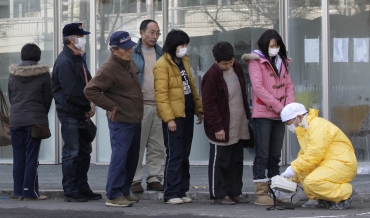
A worried Prime Minister Kan, in his address to the nation, warned that the radiation had already spread from the crippled reactors and there was "a very high risk of further leakage".
He asked an estimated 140,000 people living within 30 km of the facility north of capital to remain indoors and conserve power, as threat loomed large of Japan's crisis turning into a Chernobyl-like disaster.
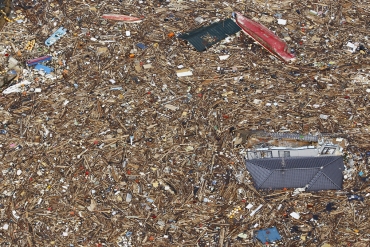
There were fears that the effects of the explosions and fire at the nuclear reactors could spread to Tokyo, home to 12 million people, as the metropolitan authorities said they had detected a small amount of radioactive material such as iodine and cesium in the air of the city.
The wind was blowing from north to south when the explosions occurred at the Fukushima plant.
The French embassy in the capital city issued an advisory, warning that low-level radioactive winds could hit Tokyo from the plant located 240 km away in about 10 hours.

Japan's Chief Cabinet Secretary Yukio Edano said the high radiation level detected at 10:22 hours after the explosions at the No 2 and No 4 reactors would "certainly have negative effects on the human body."
Kyodo, quoting nuclear experts, said radiation equivalent to 400 times the level to which people can be exposed in one year was detected near the Fukushima's No 3 reactor, where an explosion had occurred on Monday.
Residents within a 20-km radius of the plant had already been ordered to vacate the area following Saturday's hydrogen blast at the plant's No 1 reactor.
TEPCO said that most of the 800 workers had been ordered out from the stricken reactors, but the utility was continuing operation with the staff of 50 specialists to pour sea water into the troubled reactor to prevent it from further over heating. "The possibility of a meltdown cannot be ruled out as the fuel rods have been damaged," TEPCO said.
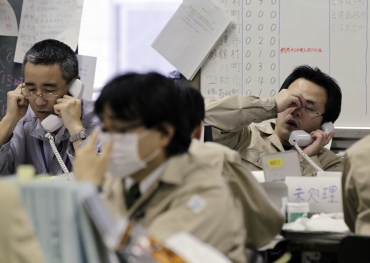
In Ibaraki prefecture, south of Fukushima, radiation levels were 100 times higher while in Kanagawa prefecture, southwest of Tokyo, radiation levels were up by nine times the normal level.
"A worrisome situation remains but I hope to take the lead in overcoming this crisis," Kan said. "I will take all measures so that damage will not expand."
All the four plants at Fukushima are reported to be in critical stage as the core of the No 1, 2 and 3 reactors are believed to have partially melted following Friday's earthquake and giant tsunami waves that have killed an estimated 10,000 people.
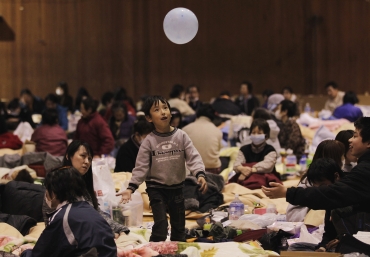
Over 2,000 bodies were found on Monday on two shores in Miyagi Prefecture, the worst hit by the earthquake and tsunami, as Japan continued to struggle to grasp the full extent of the disaster.
About 1,000 bodies were washed ashore on the hardest-hit Miyagi's Ojika Peninsula while another 1,000 were spotted in the town of Minamisanriku where the government has been unable to contact about 10,000 people, or over half the local population.